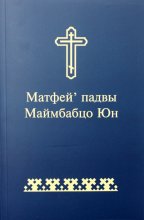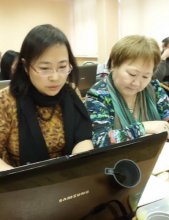

The Institute for Bible Translation has published a translation of the Gospel of Matthew in the Nenets language. Earlier published portions in the same language include Selected Passages from the Gospel of Luke (1995), Stories about Jesus (2003); the Gospel of Luke (2004); the Gospel of Mark (2010); the Gospel of John (2014).
The Nenets, who number 44 640 people, are the largest people group populating an enormous territory on the Eurasian coast of the Arctic Ocean from the Kola Peninsula to the Taymyr Peninsula. The Nenets are divided into two groups, the Forest Nenets and the Tundra Nenets. The Tundra Nenets comprise 90% of all the Nenets people. They are the dominant ethnic group of the Yamalo-Nenets Autonomous Okrug and of the Taymyrsky Dolgano-Nenetsky District of the Krasnoyarsk Krai.
The Nenets used to be called Samoyed or Samoyed-Yurak people. They are first mentioned in the ancient Russian chronicle The Tale of Bygone Years, which dates back to the beginning of the 12th century. The primary occupation of the Nenets is reindeer herding. On the Yamal Peninsula there are several thousand nomadic reindeer herders, whose herds number around 500,000 deer.
Up until the 19th century the Nenets held to their animistic beliefs. Due to the missionary efforts of the Russian Orthodox Church in the 1820s, the majority of the Nenets became Orthodox Christians. The beginning of the 1990s also saw the arrival of new Evangelical churches among the Nenets. In spite of this, just as they did in the past, the Nenets still practice many of their ancient pagan rituals and traditions and hold on to their own understanding of the world.
About 77.7% of the people claim Nenets to be their native tongue. In 1932 the language received its own orthography, which was first based on the Latin script, and then in 1937 on the Cyrillic script.
The project to translate the Bible into Nenets began in the 1990s far away from the customary dwelling place of the Nenets. The first translation of the Gospel of Luke was completed by the linguist who lived most of his life in St. Petersburg. In 2001 the theological checker who learnt the language settled in Salekhard among the Nenets and built a new translation team. As a result, the new translation of the Gospel of Luke and then of the Gospels of Mark, John and Matthew was done by the Nenets living in their own traditional and cultural environment on the land of their ancestors. The fact that the translation team members were native speakers greatly increased the comprehension of the text by the readers, which was confirmed as a result of checking the translation in both the urban areas and the tundra camps.
This publication will be used for both religious training by churches and for teaching children and adults alike their native language by secular educational establishments. This will aid the task of preserving and developing the Nenets language, which is considered to be one of the endangered languages of the peoples of Russia.
The e-book version of the Gospel of Matthew, as well as other Nenets publications, can be accessed at the IBT's site in the e-books section.

Share: